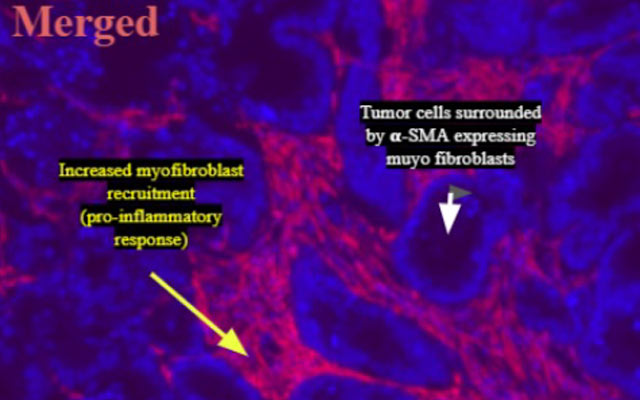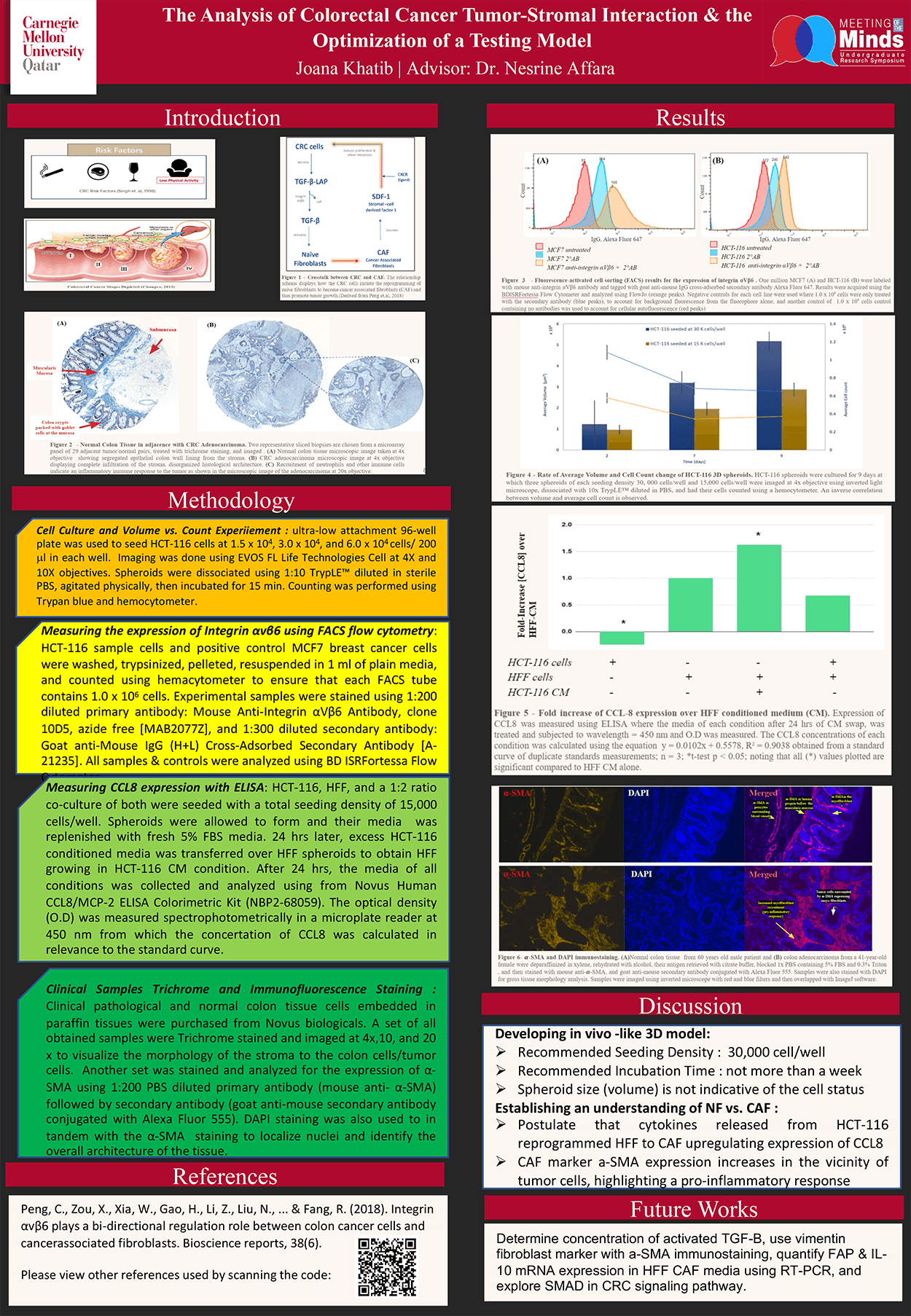To halt the proliferation of cancer cells by leveraging their surroundings, a closer look at a proposed bi-directional relationship between the tumor and its stroma is studied. While previous research has established key factors within this mechanism such as TGF-β and SDF-1, we still lack the knowledge about the mechanism by which reprogramming occurs. Using HCT-116 immortalized colorectal cancer (CRC) cell lines and the readily available human foreskin fibroblasts (HFF), the reprogramming of fibroblast to cancer-associated fibroblasts is analyzed using 3D culture while optimizing an in-vivo like CRC model to be used for drug toxicity and further inter-relational studies. To address this endeavor, a co-culture of the mentioned cells was assessed for markers to better understand how the addition of naïve fibroblast affect the growth of tumor-derived spheroids. In return, the morphology of the naïve fibroblasts in comparison to that of an adenocarcinoma in addition to the protein expression change of fibroblasts when in the vicinity of a tumor were studied. Markers and number of fibroblasts were observed to increase due to tumor interaction. The tumor model was successfully optimized and studied to understands the micro (spheroids) to macro (in vivo tumor) translation.



